
MG Astor 2025 vs Kia Seltos: Specification Comparison Between The...
- Feb 9, 2025
- Views : 403

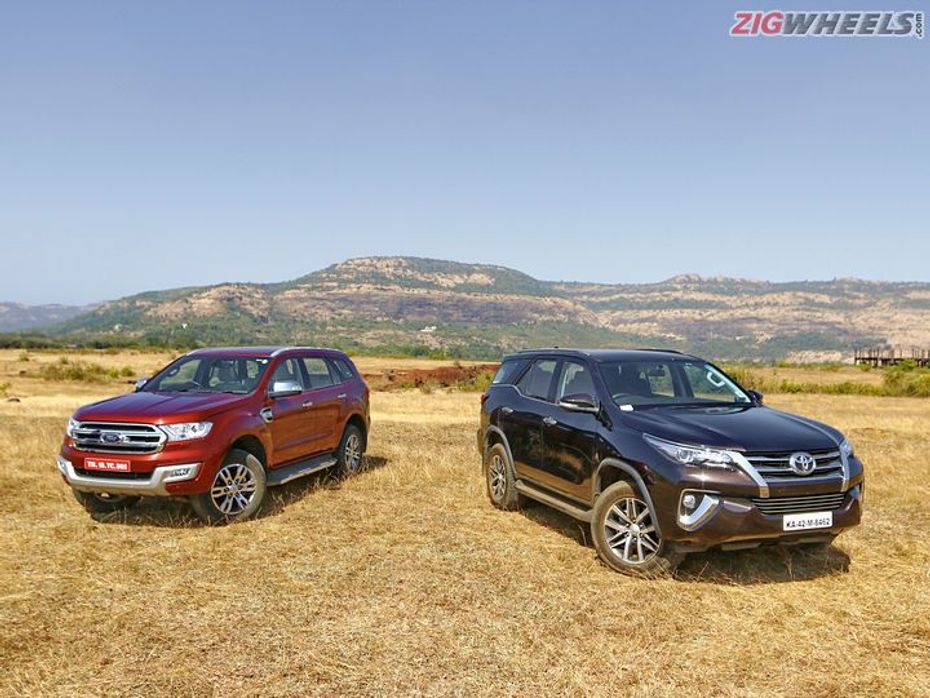
I’ve no doubts that the Ford Endeavour and Toyota Fortuner are the most popular SUVs in the country. The previous generation Endeavour did excellently for Ford in India, but then the Fortuner came in, and it ruled the segment almost until Toyota pulled the plug on it. The new Endeavour has come back really strong though, with Ford improving the SUV in every possible department to make it more appealing. Like its predecessor the new Endeavour has become hugely popular, but Toyota has just thrown a spanner in Ford’s works in the form of the all-new Fortuner.
The new Fortuner looks smashing, gets more power, features, equipment, abilities and what not. But can it repeat the success of the original? The two SUVs are back for a bout in the ring then, and the sequence reminds me of Sylvester Stallone blockbuster Rocky 2. It was the sequel to Rocky, and had Rocky Balboa go up against Apollo Creed for a rematch, and the tussle between the two SUVs here sounds similar. Both SUVs are back from a full workout, muscle rippling, and are loaded to the gills with the latest techno-gadgetry. Time to play referee and see who can knock out whom.

Round 1: Exterior design
Before they begin trading punches let’s take a quick look at the physique and build of the two fighters… err... SUVs. It’s difficult to pick one, as both are good looking in their own ways. The new Fortuner more chiselled and muscular than the older one. Its edgy design is eye-catching, and is in fact a radical departure from what the Fortuner was. It is leaner and meaner looking, with rippling muscles from end to end. The sculpted bumper, muscular grille and sharp headlamp design with well-positioned LED daytime running lamps lend its front with a very appealing stance. The Fortuner then, is Rocky Balboa to me.
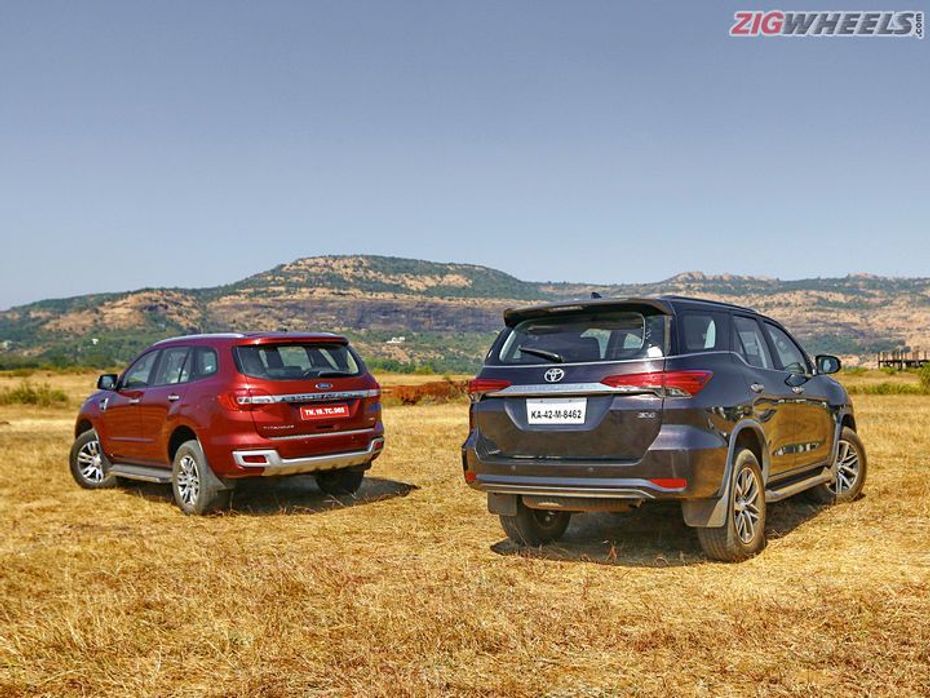
So naturally, and by virtue of its design, the Ford Endeavour plays Apollo Creed. It is a typical American SUV – no sharp edges but the brawny stance is unmistakable. The large front grille, flared wheel arches, silver skid plate and tall stance all make for a ‘don’t mess with me’ aura. The Fortuner looks more modern from the side with its sculpted design and sharp tail lights extending onto the sides, while the Endeavour looks more old school. The difference is as apparent from the rear too, but both derrieres look appealing. Goes without saying, both SUVs command a lot of road presence.
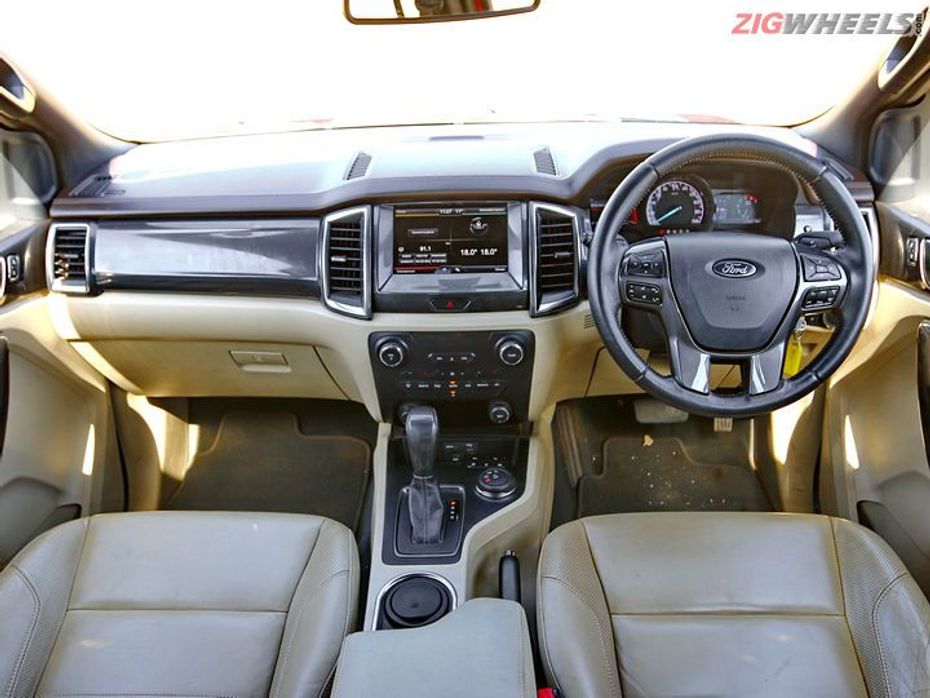
Round 2: Interiors
Both SUVs start trading punches again as soon as the bell is sounded. The Ford impresses with its luxurious, well-appointed insides. Its dashboard is a nice mix of beige and grey, and its top is swathed in leather which gives it a premium feel. The feel is accentuated with the well-laid out centre console, quality of plastics, and switches. The Fortuner on the other hand wears an all-black theme, which looks sporty. There’s a nice feel to the Toyota’s cabin but somehow it doesn’t feel as premium as the Ford’s. There’s lesser leather on the dash and the quality of plastics isn’t as good.
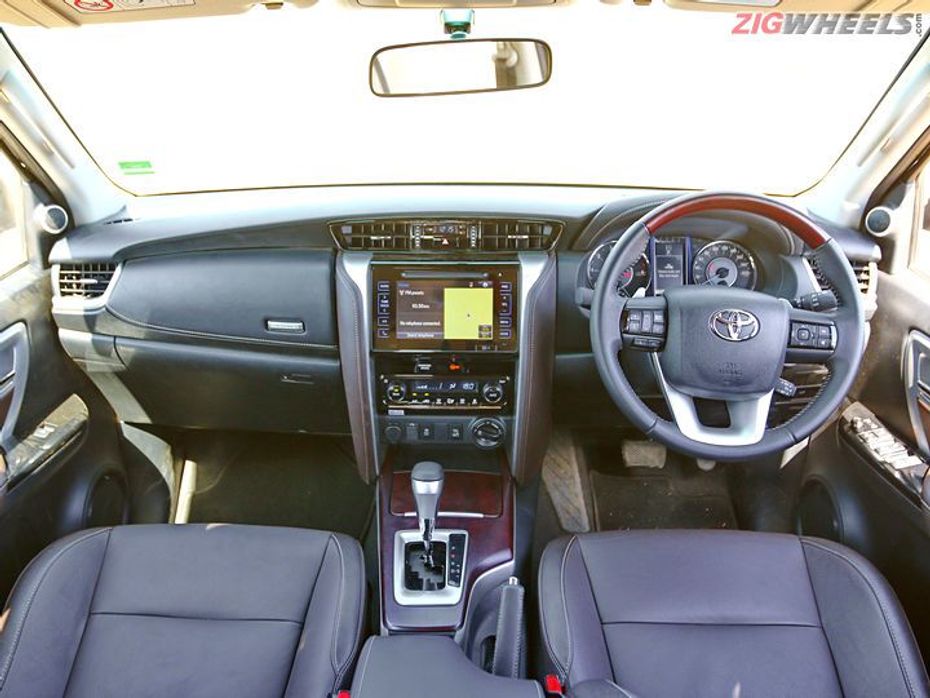
The Fortuner’s centre console looks busy but gets an unlacquered wood finish, which is a nice touch. Then there’s the Fortuner badge on the top glove box, which is cooled. The Endeavour in comparison only gets a single glovebox, sans the cooling, unlike the Fortuner’s two gloveboxes. The Endeavour’s cabin feels more spacious when behind the wheel thanks to the lower set dash and bigger windscreen. What takes the cake though is the panoramic sunroof which gives the Endeavour an airy feel, which the Fortuner misses out on.
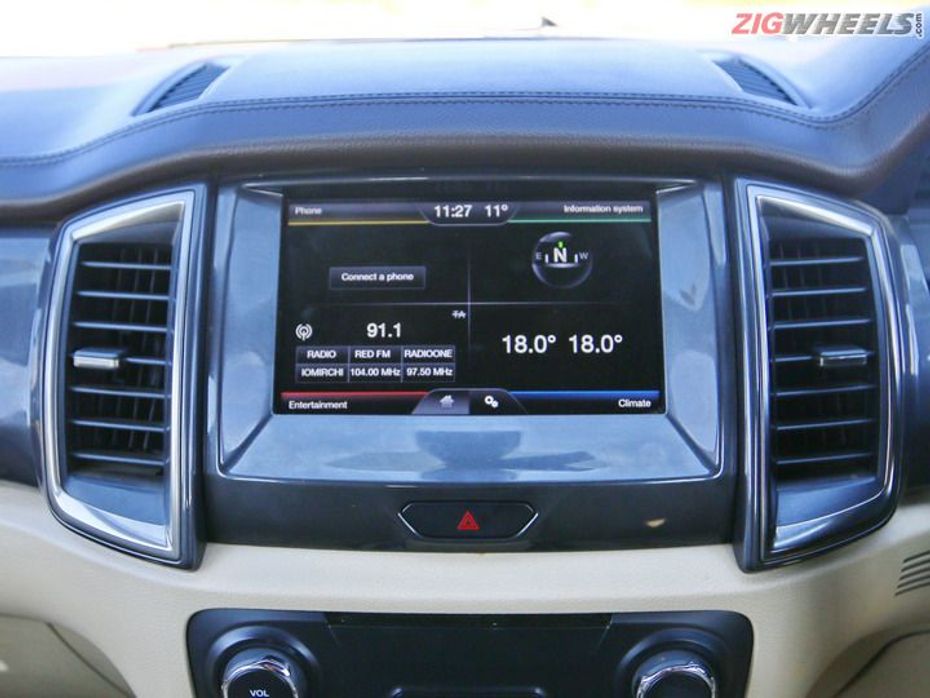
Round 3: Features
The close bout continues, though there are a few misses from either side. Toyota is offering keyless entry and a start-stop button, but Ford isn’t. The Endeavour gets semi-auto parallel park assist and front parking sensors, features the Fortuner misses out on. Ford is offering its SYNC3 in the Endeavour’s infotainment system which allows you to pair your smartphones via Apple CarPlay or Android Auto, unlike the Fortuner. However, the Toyota gets navigation, which the Ford doesn’t.
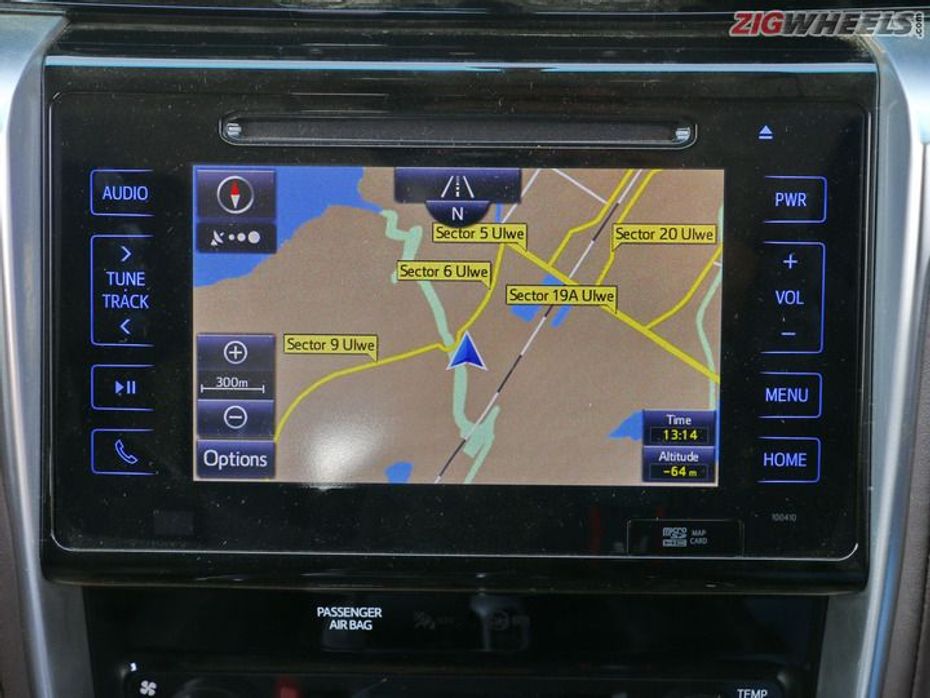
The audio system in the Endeavour also offers a crisper sound quality and gets 10 speakers, as compared to the Fortuner’s 6-speaker unit. The Endeavour also hits back with dual zone climate control and temperature control for the second row. The Fortuner misses out on the dual zone climate control, and only lets you control the blower speed for the second row vents. The Toyota gets back with steering reach adjustment, a feature missing in the Endeavour. Both SUVs get powered tail gates, and you can set the maximum height for the door to suit your liking on both.

Round 4: Space
The Endeavour lands the first blow in this round with a more spacious front row, which the Fortuner trades with a more spacious second row. Not that the Endeavour is lacking – with a near 5 metre length there’s ample legroom but the Fortuner offers a bit more knee and legroom. The Ford’s seat are more comfortable though, and offer better under thigh support. The Endeavour though loses out in terms of ease of accessibility and space in the third row. The Fortuner’s second row seats flip and tumble forward, allowing easy ingress. Getting into the Endeavour’s third row is more tedious as the seatbacks only flip down.
Neither are well suited for fully grown adults for long journeys but the Fortuner’s third row feels better in terms of legroom, though kneeroom isn’t great. When it comes to putting the third row seats down to make space for luggage, the Endeavour packs in an extra. Its third row seats are powered, and you can flip the seats down at the press of a button which adds to the convenience, while in the Fortuner you need to fold and move the seats up manually.
Round 5: Cabin experience
Drive both SUVs back to back and the difference between cabin experiences is apparent quickly. When you turn the engines on, the Ford sounds a bit noisy, but jump into the Fortuner at idle and you know the Toyota engine is louder and slightly coarser sounding. Get a move on, and the Ford feels quieter inside, with a not so loud, un-diesel like, sporty sound. The quietness inside is courtesy Ford’s active noise cancellation technology that uses three microphones inside to emit a low sound and cancel the ambient and engine noise from outside.
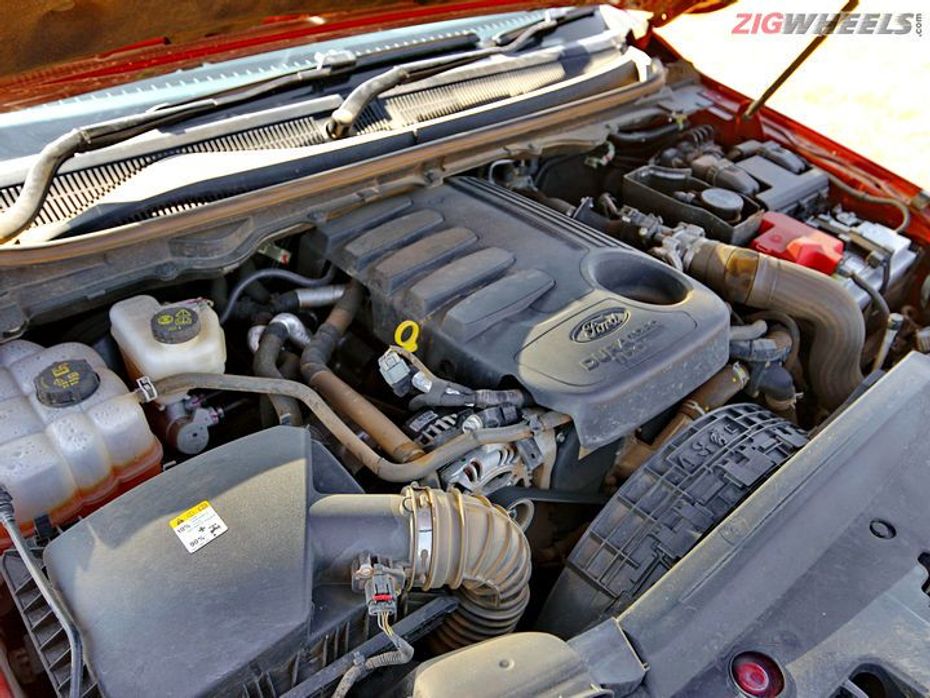
Round 6: Engines and performance
This is, undoubtedly, the most important round. Powering the Fortuner is a four-cylinder, 2.8-litre diesel engine that offers 177PS and 450Nm of torque in the automatic version here, while the manual offers 420Nm. The Endeavour packs in a five-cylinder, 3.2-litre engine producing 200PS and 470Nm of torque, and has an advantage in terms of performance. The Ford was quick to sprint to 100kmph in 10.86 seconds in our tests. The Fortuner is slower by over a second, and took 12.14 seconds.

The Endeavour is also quicker in terms of roll-on acceleration. it took 6.54 seconds to accelerate from 20kmph to 80kmph, as compared to the Fortuner’s 7.2 seconds. All this despite the Endeavour being 250kg heavier at 2394kg, as compared to the Fortuner which weighs 2135kg. Ford’s six-speed automatic transmission deserves credit, as it is the quicker of the two gearboxes to shift gears and adds to the performance. The Fortuner’s six-speed unit feels slower to shift, robbing the engine of some of its performance.
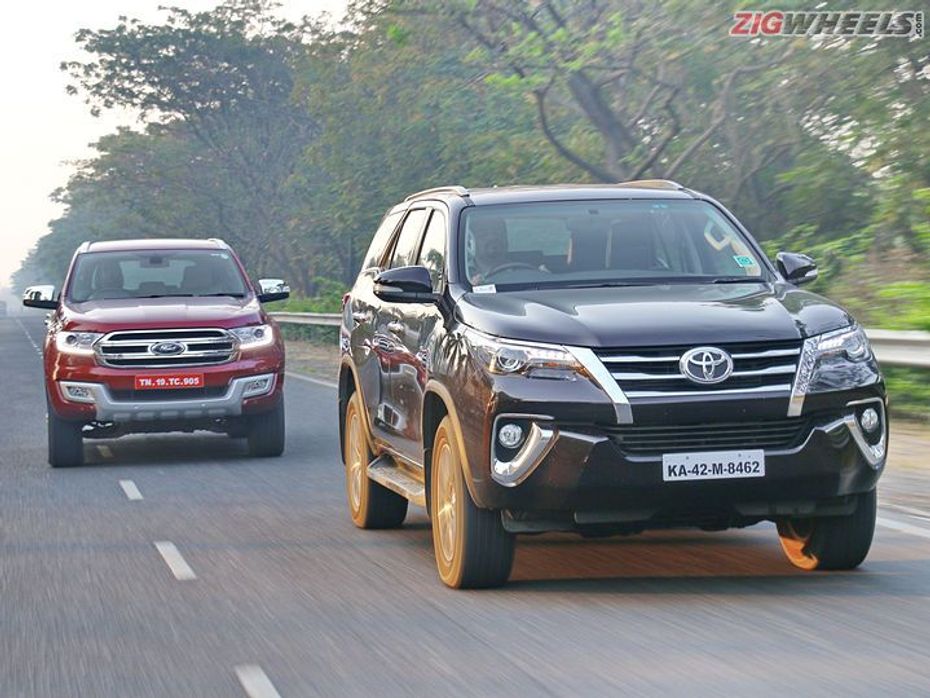
Round 7: Ride and handling
Both feel equally good on open highways, and offer a relaxed feel. The Ford should be slightly better to drive distances thanks to its quieter cabin and should be less tiring. The Endeavour also feels more comfortable with its softer suspension that absorbs bumps and expansion joints better. The Fortuner feels stiffer, especially at lower speeds. Drive over broken roads and the Toyota lets you feel some of its body shuddering, while the Endeavour feels goes across softly.
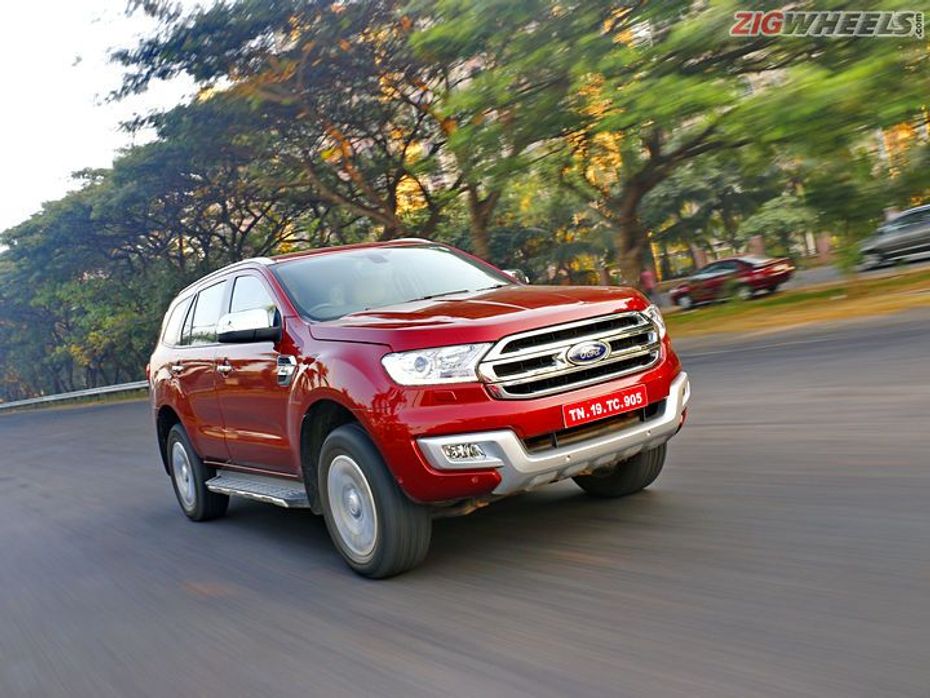
The Endeavour also feels better in city traffic with its lighter and more responsive steering. The steering weighs up well at speeds and offers a more direct feel and better feedback than the Fortuner’s unit which feels relatively dull. So, the Endeavour feels more engaging to drive but the Fortuner feels more planted at speeds thanks to the stiffer suspension, which reduces body roll – especially when switching lanes on the highway. Admittedly, the new Fortuner’s handling impresses a lot, and it clearly is a generation ahead of the previous one. It feels sportier and more eager to change direction.

In a nutshell, both are old-school, body on frame SUVs but there’s a distinct difference between the way they feel on the road. The Ford hinges towards a mix of comfort and engaging feel, while the Toyota tries to offer a sportier feel.
Round 8: Off-road
We were unable to go for some serious off-roading, but did manage to try some basic off-road driving and rock climbing with this duo. The Fortuner comes better equipped to tackle tricky stuff than before, and gets the de rigueur knob to switch modes. You can switch from 2H to 4H on the fly, but need to be stationary to switch to 4L. There’s no other tricks, except for hill descent control and a central diff lock, and the Fortuner is still your old school 4x4 SUV. It has no trouble climbing rocks or clearing ruts. Its ground clearance of 184mm is a bit of a limitation though when you consider the Endeavour’s 225mm clearance.
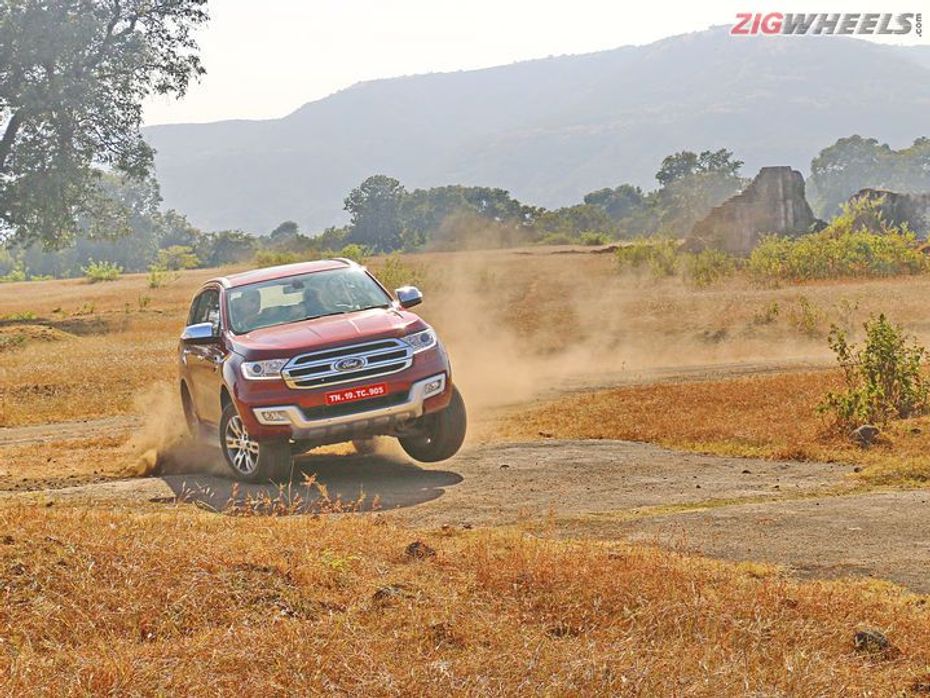
Of course, the Endeavour’s party trick is its terrain management system. It gets a rotary knob to choose between normal (road) mode, apart from sand, snow/mud and rock modes. The transmission, throttle sensitivity and brakes also get customised as you switch modes. The Endeavour also gets a rear differential lock, which the Fortuner misses out on. When climbing rocks the Endeavour’s front parking sensors are a help, offering a sense of how close the front end is to obstructions. Lack of front sensors in the Fortuner means you aren’t as confident at times. But despite not having as much equipment, the Fortuner isn’t anywhere close to throwing the towel in, and goes off tarmac without a hitch. It’s just that the Endeavour feels more confident with its electronics.
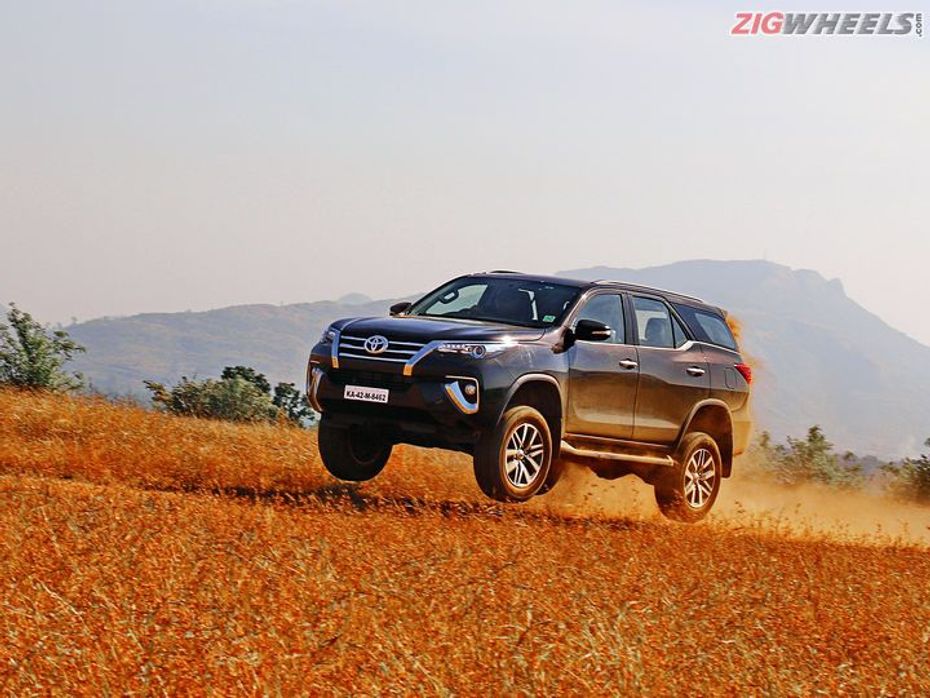
Final round
This comparison has been one of the closest we’ve seen, and there’s every bit of similarity to the rematch in Rocky 2. Both SUVs trade punches or push the opponent into the corner to land blows time and again. The new Fortuner is a huge improvement as it looks fantastic, has a more powerful motor, handles a lot better and boasts serious equipment levels. And it proudly wears the Toyota badge, that’s proof of the SUV’s bulletproof reliability. It is hard to fault with, and is extremely convincing as a buy. But throw it into the ring with the Endeavour, and it is the Ford that packs a bigger punch.
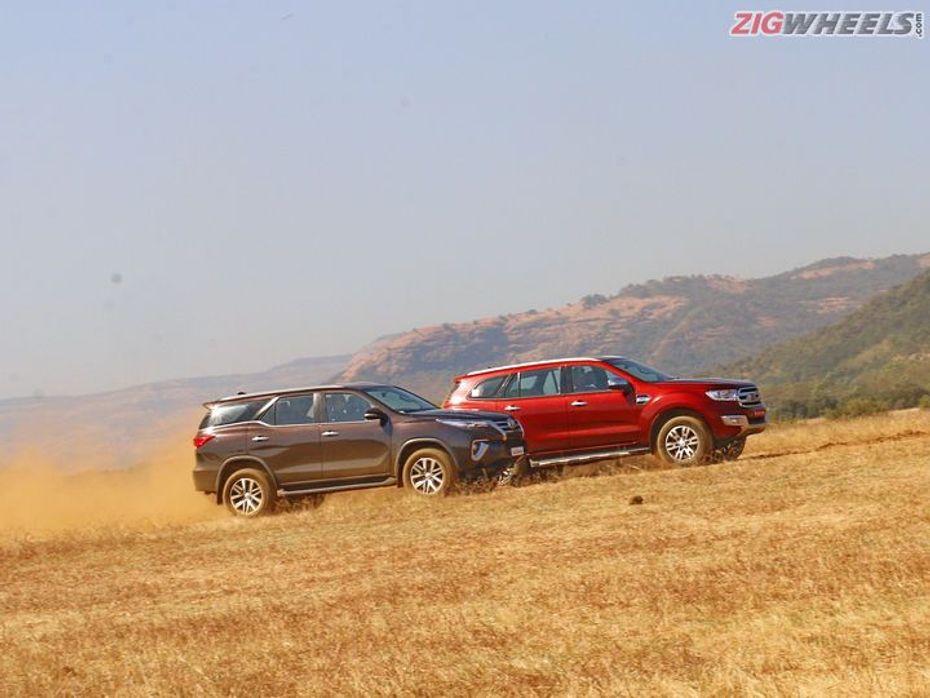
The Endeavour gets a more powerful engine and scores better in terms of features and equipment levels. It also feels more comfortable and more engaging to drive while feeling just a bit more premium. The final blow it lands to the Fortuner is in terms of pricing. At Rs 30.46 lakh ex-showroom New Delhi, the top of the line Endeavour 3.2 4x4 AT Titanium costs almost a lakh lesser than the Fortuner 2.8 4x4 AT which retails at Rs 31.12 lakh, despite the additional equipment. It is almost surprising how closely matched the two SUVs are, but unlike the movie, Rocky Balboa does not win this bout. It’s the Endeavour that comes across as a wholesome package, offering better bang for your buck. So, Apollo Creed wins!

MG Astor 2025 vs Kia Seltos: Specification Comparison Between The...

2025 MG Astor Vs Skoda Kushaq: Specifications And Features Compared

2025 MG Astor Takes On Volkswagen Taigun: Features And Specifications...

2025 Tata Tiago Vs Hyundai Grand i10 Nios: The Clash Of Updated...

New Kia Syros Takes On The Kia Carens: Features, Specifications, And...

Kia Syros vs Hyundai Exter: Two Distinctly Sized Korean SUVs Compared...

Is The Kia Syros More Compelling Than The Best-selling Hyundai Creta?

Kia Syros vs Maruti Brezza: Most Premium Sub-4m SUV Compared With The...

Kia Syros Vs Hyundai Venue: Korean Subcompact SUVs Compared

Mahindra Thar Roxx, Scorpio N, Thar Go Off-Roading! The OG Proves Its...
India's largest automotive community
 You Should Pick The Maruti Suzuki Celerio Over Wagon R For This Reason!
You Should Pick The Maruti Suzuki Celerio Over Wagon R For This Reason!
 Royal Enfield Extreme Riding Gear Launched In India
Royal Enfield Extreme Riding Gear Launched In India
 Maruti Suzuki e Vitara Reaches Dealerships Ahead Of Launch! Check Out What The Hyundai Creta Electric Rival Offers…
Maruti Suzuki e Vitara Reaches Dealerships Ahead Of Launch! Check Out What The Hyundai Creta Electric Rival Offers…
 Have A Look At The All New Designed Mahindra SUV Dealership Unveiled In Mumbai
Have A Look At The All New Designed Mahindra SUV Dealership Unveiled In Mumbai
 MG Astor First Drive Review: Standing Out In Style
MG Astor First Drive Review: Standing Out In Style
 2021 Mahindra XUV700: First Drive Review
2021 Mahindra XUV700: First Drive Review
 Kia Sonet Driven: More Than Just A Great Brochure?
Kia Sonet Driven: More Than Just A Great Brochure?
 Rolls-Royce Ghost Series II
Rs. 8.95 Crore
Rolls-Royce Ghost Series II
Rs. 8.95 Crore
 Kia Syros
Rs. 8.99 Lakh
Kia Syros
Rs. 8.99 Lakh
 Vayve Mobility Eva
Rs. 3.25 Lakh
Vayve Mobility Eva
Rs. 3.25 Lakh
 BMW X3
Rs. 75.80 Lakh
BMW X3
Rs. 75.80 Lakh
 Hyundai Creta Electric
Rs. 17.99 Lakh
Hyundai Creta Electric
Rs. 17.99 Lakh